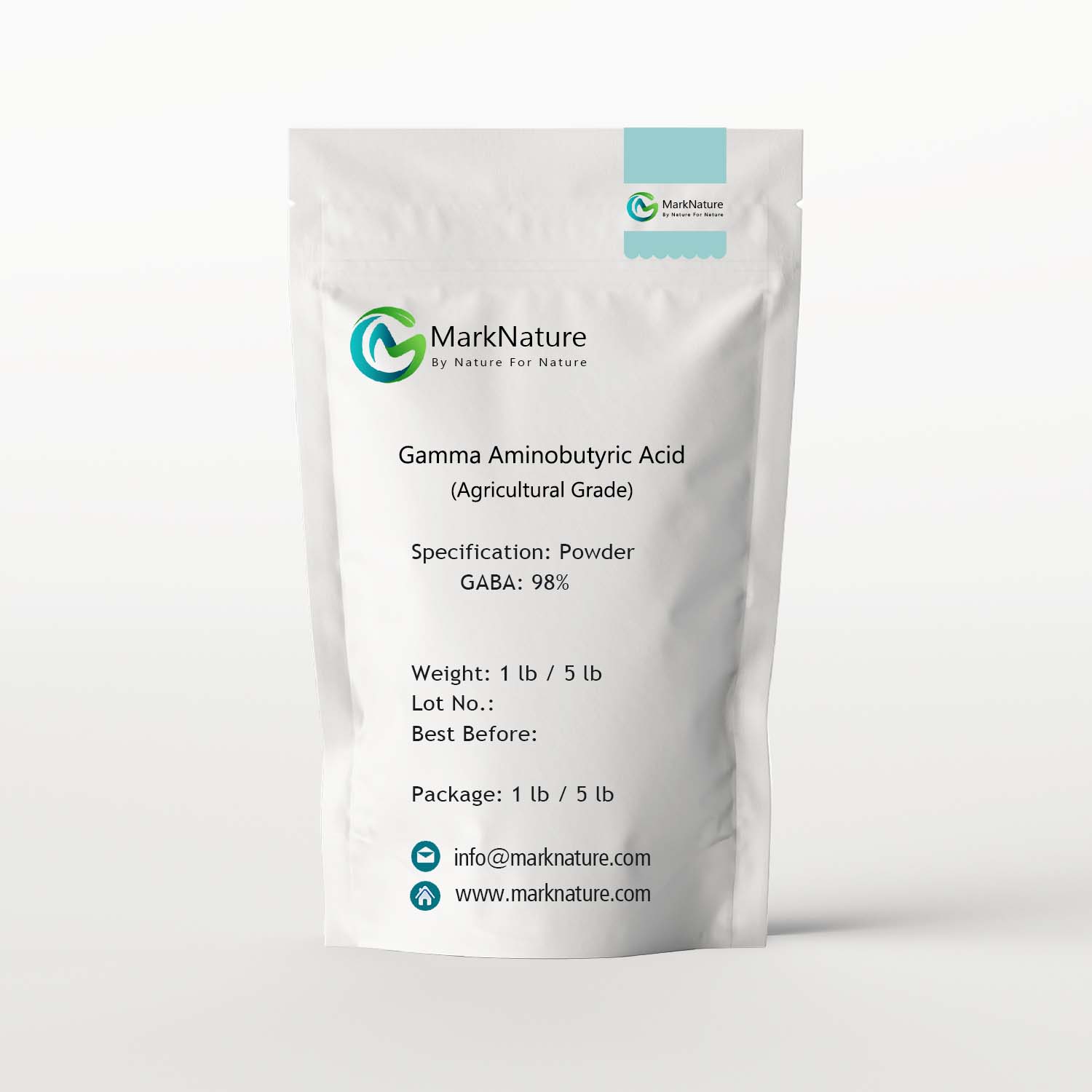Description
Marknature's GABA is a high-purity, naturally derived product produced through fermentation. It is stable, free from impurities, and offers numerous benefits for sustainable agriculture, including stress resistance, growth regulation, and enhanced resilience to environmental factors.
As a key plant growth regulator, GABA is widely recognized for improving plant tolerance to various abiotic stresses such as drought, salinity, and extreme temperatures. This makes it an invaluable component in modern agricultural biotechnology, helping to ensure sustainable crop production and increased yield quality.
CAS Number: 56-12-2
EC Number: 200-258-6
Molecular Weight: 103.12
Molecular Formula: C₄H₉NO₂
Synonyms: 4-Amino-n-butyric Acid, GABA
Specification
Appearance: White powder or white crystals
Assay [γ-GABA]: ≥ 98.0%
pH: 6.5–7.5
Arsenic: ≤ 2.0 ppm
Lead [Pb]: ≤ 5 ppm
Loss on Drying: ≤ 1.0%
Key Features
1) Advanced Fermentation Process: High purity, free from impurities.
2) Stability: Excellent stability with no known side effects.
3) High Solubility: Soluble up to 130g in 100g water.
Applications
1) Stress Resistance in Crops: GABA enhances plant tolerance to abiotic stresses like drought, salinity, and temperature extremes. Foliar sprays or irrigation applications can mitigate the negative effects of these stresses, improving crop yield and quality.
2) Plant Growth Regulation: GABA helps regulate plant growth and development, making it useful in managing the size, shape, and flowering time of crops and ornamental plants.
3) Soil Health Improvement: GABA promotes beneficial microbial activity, contributing to a balanced soil ecosystem and enhancing soil health, which is crucial for sustainable agriculture.
4) Enhanced Crop Ripening & Quality: GABA accelerates ripening, promotes the coloring and sweetening of fruits, and boosts the synthesis of ethylene, anthocyanins, and aromatic substances. It also improves the absorption of essential trace elements, enhancing crop quality.
5) Post-Harvest Preservation: GABA helps extend the shelf life of fruits and vegetables by reducing spoilage and maintaining quality, thus minimizing food waste.
6) Pest and Disease Management: GABA triggers plant defense mechanisms, enhancing plant resistance to pests and diseases, providing an additional layer of protection for crops.
Recommended Application Guidelines
Foliar Spray:
• 150–300 g/ha, or 15–30 g per 100 L of water
• Apply every 10–15 days during active growth
• Spray in early morning or late afternoon; avoid strong sunlight
Fertigation / Drip Irrigation:
• 300–600 g/ha, depending on crop needs
• Apply every 2–4 weeks for continuous support
• Ensure complete dissolution before injection
Seed Treatment:
• 0.5–1.0 g per kg of seeds
• Mix thoroughly and allow seeds to dry before sowing
Root Dipping / Transplant Treatment:
• 50–100 g per 100 L of water
• Dip roots for 10–15 minutes before transplanting
General Directions:
• Suitable for vegetables, fruits, row crops, seedlings, turf, and ornamentals
• Recommended solution pH: 5.5–7.0
• Conduct a jar test before mixing with other fertilizers or agrochemicals
Compatibility:
• Compatible with most NPK fertilizers, humic/fulvic acids, amino acids, seaweed extracts, and trace elements
• Avoid mixing with strong acids, strong alkalis, oxidizers, or copper products in the same tank
Storage & Handling:
• Store sealed in a cool, dry place, away from moisture and direct sunlight
• Use protective gloves and avoid inhaling fine powder
Note: Application rates may vary by crop, soil, climate, and management practices. Field trials are recommended before large-scale use.

